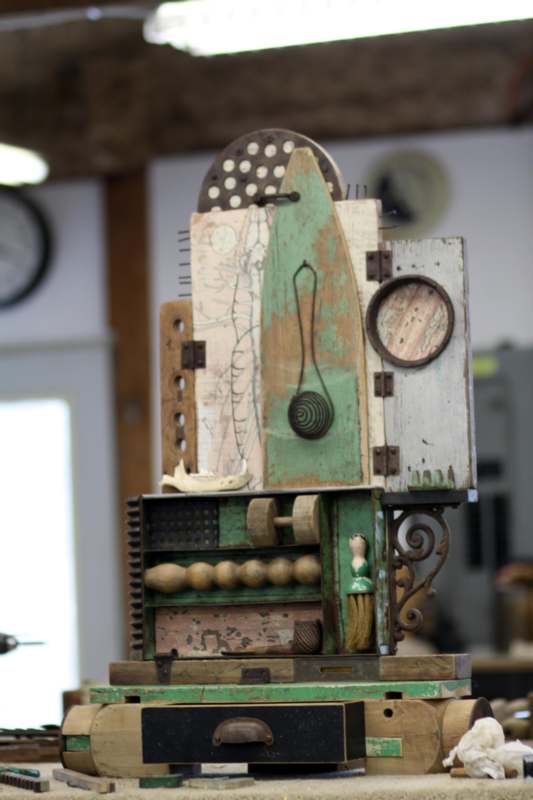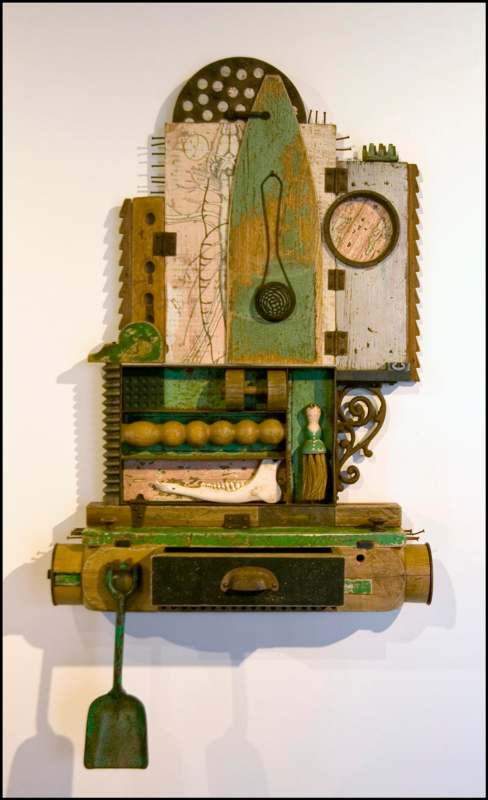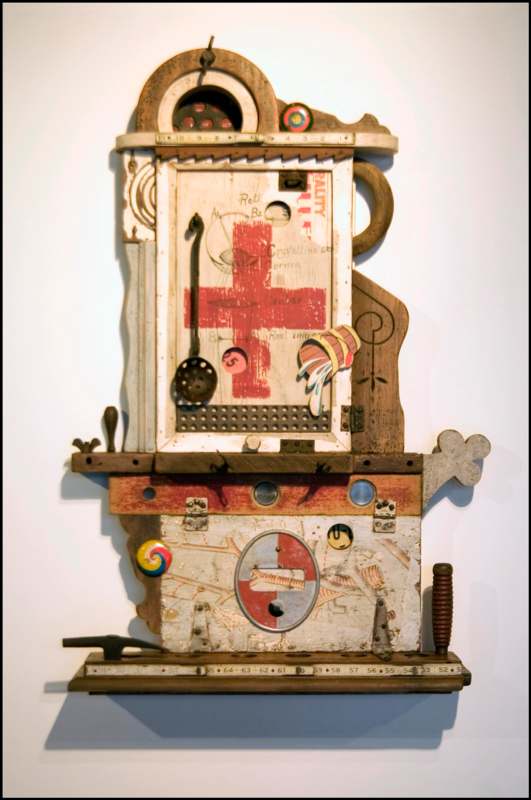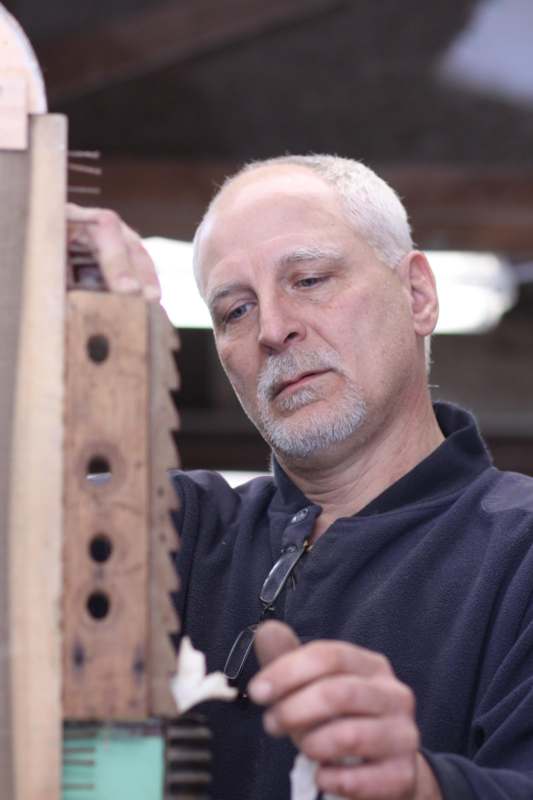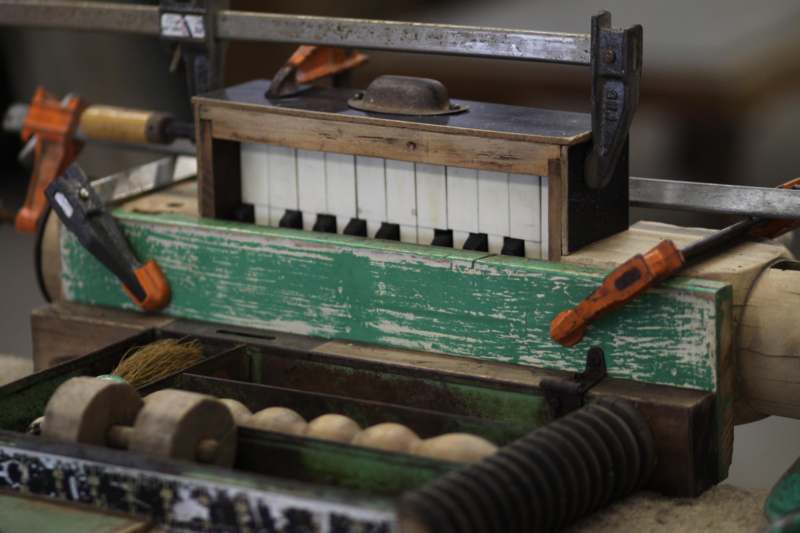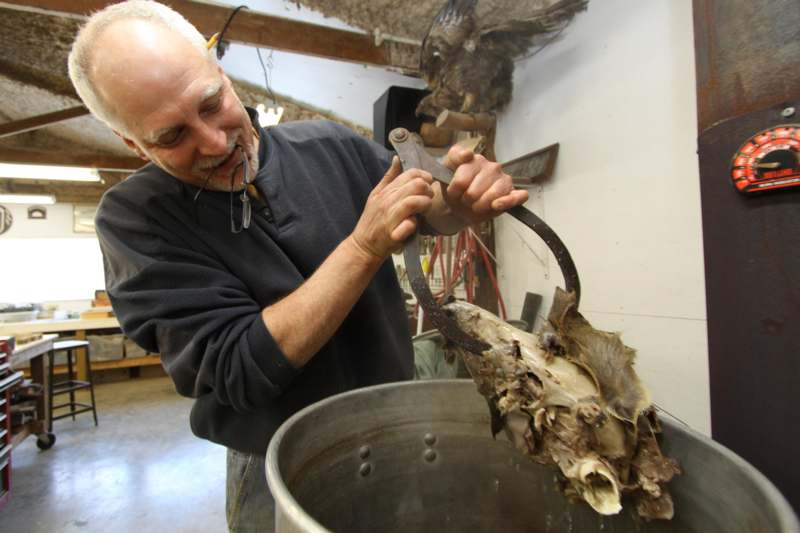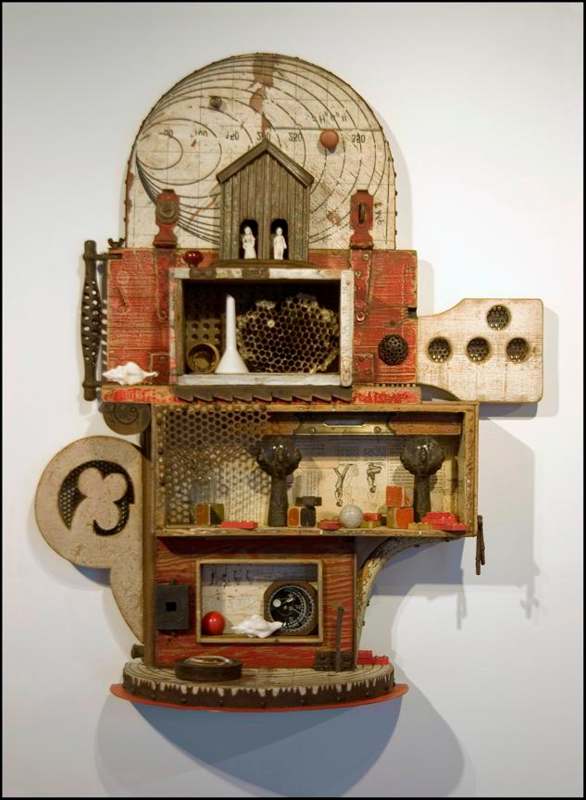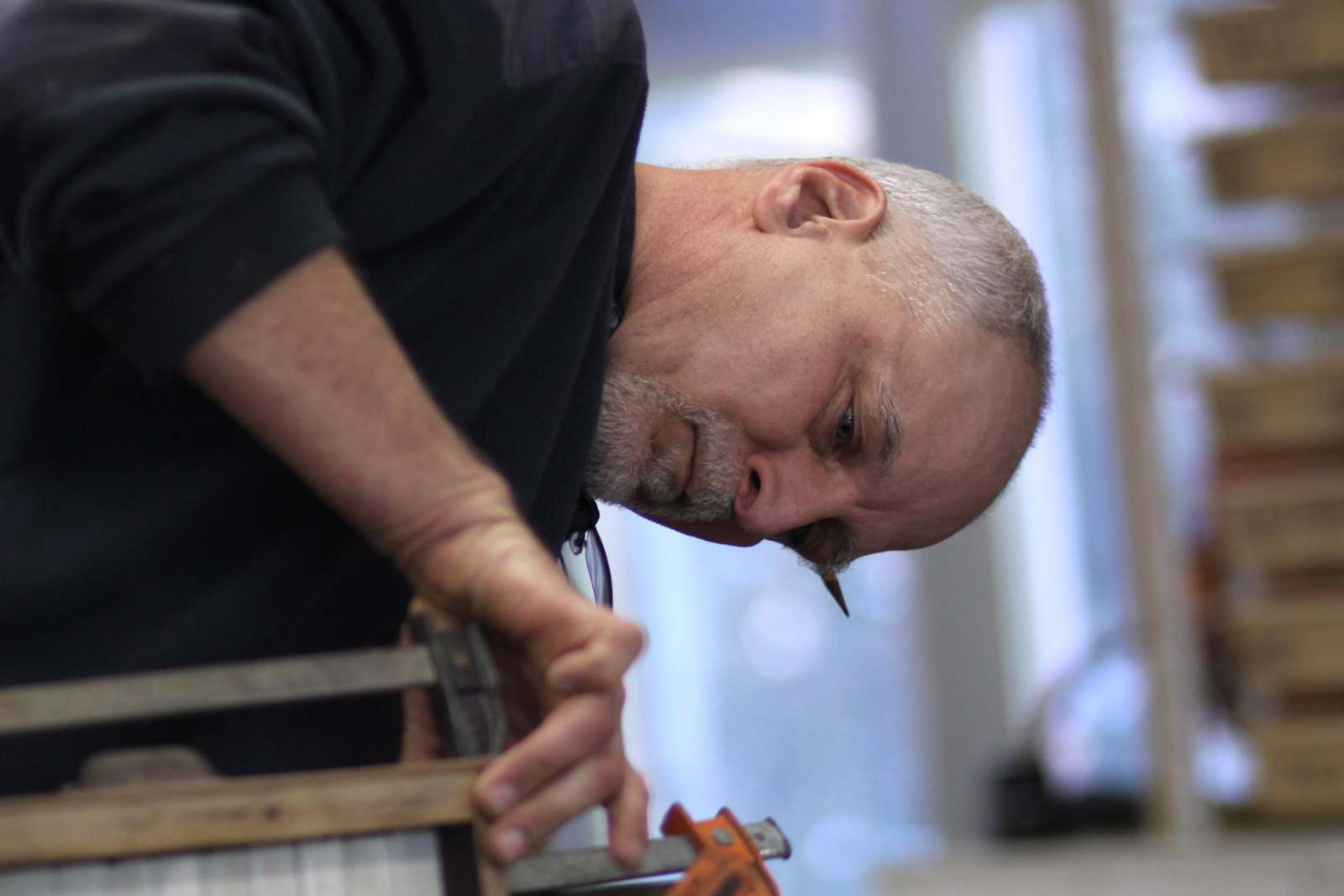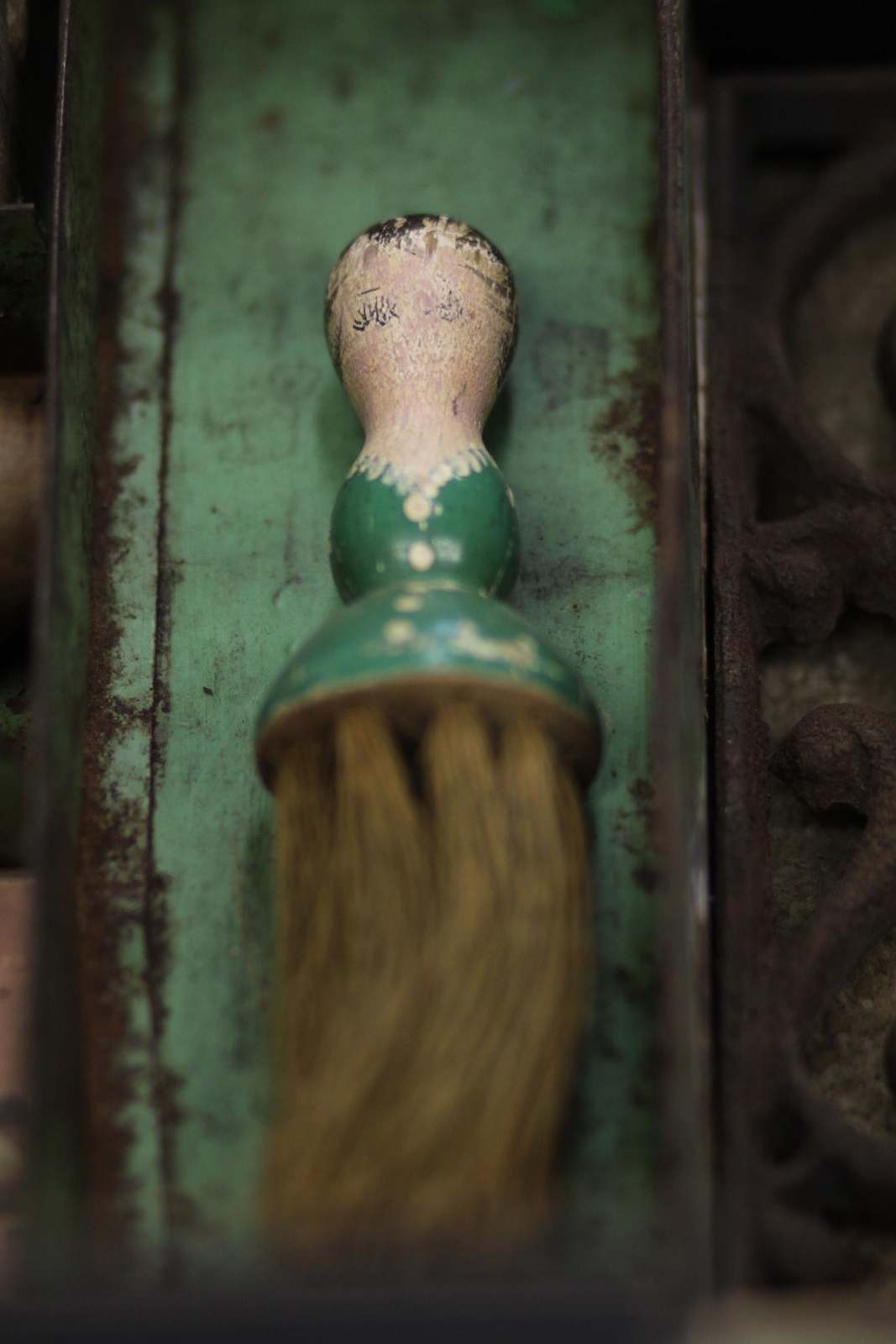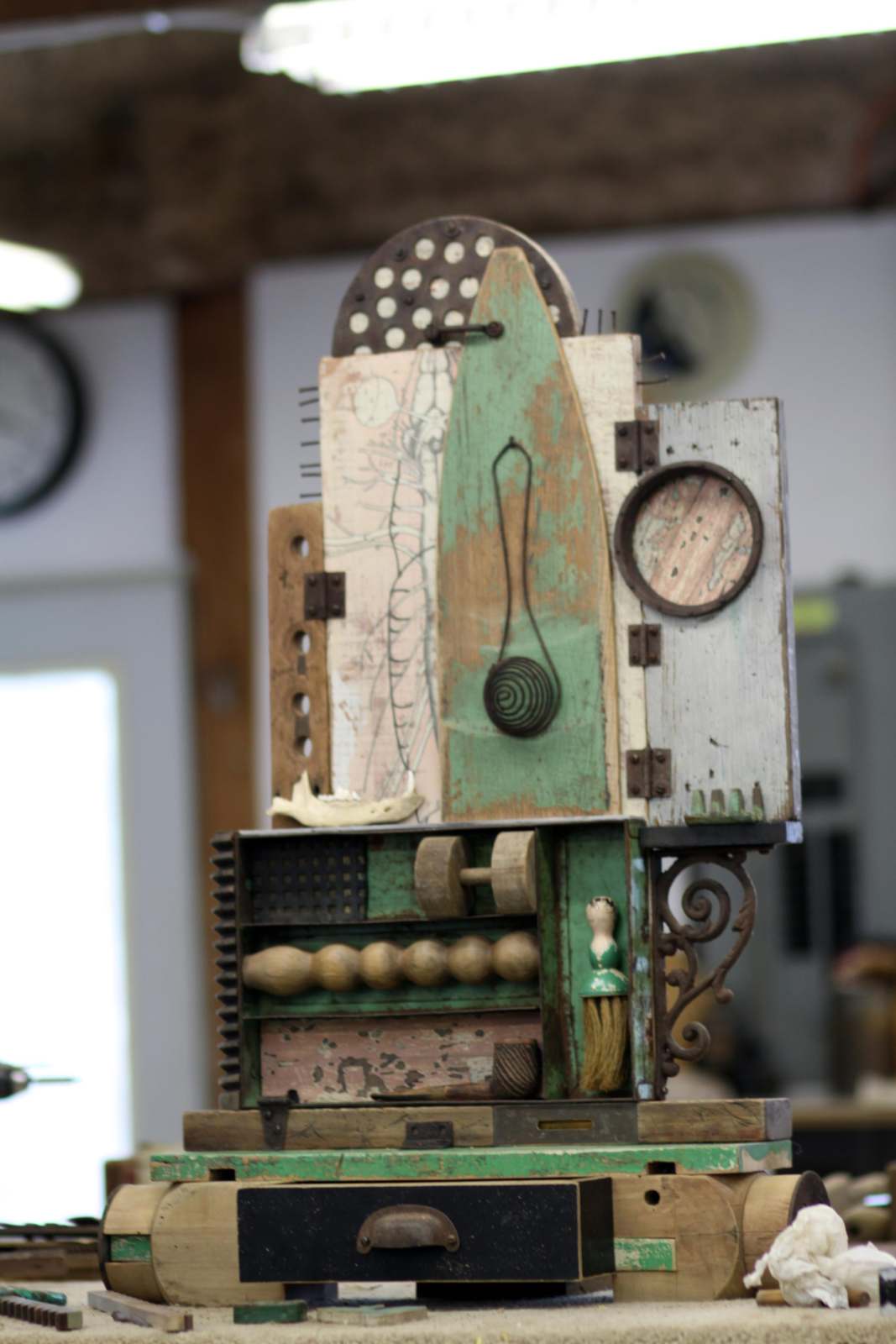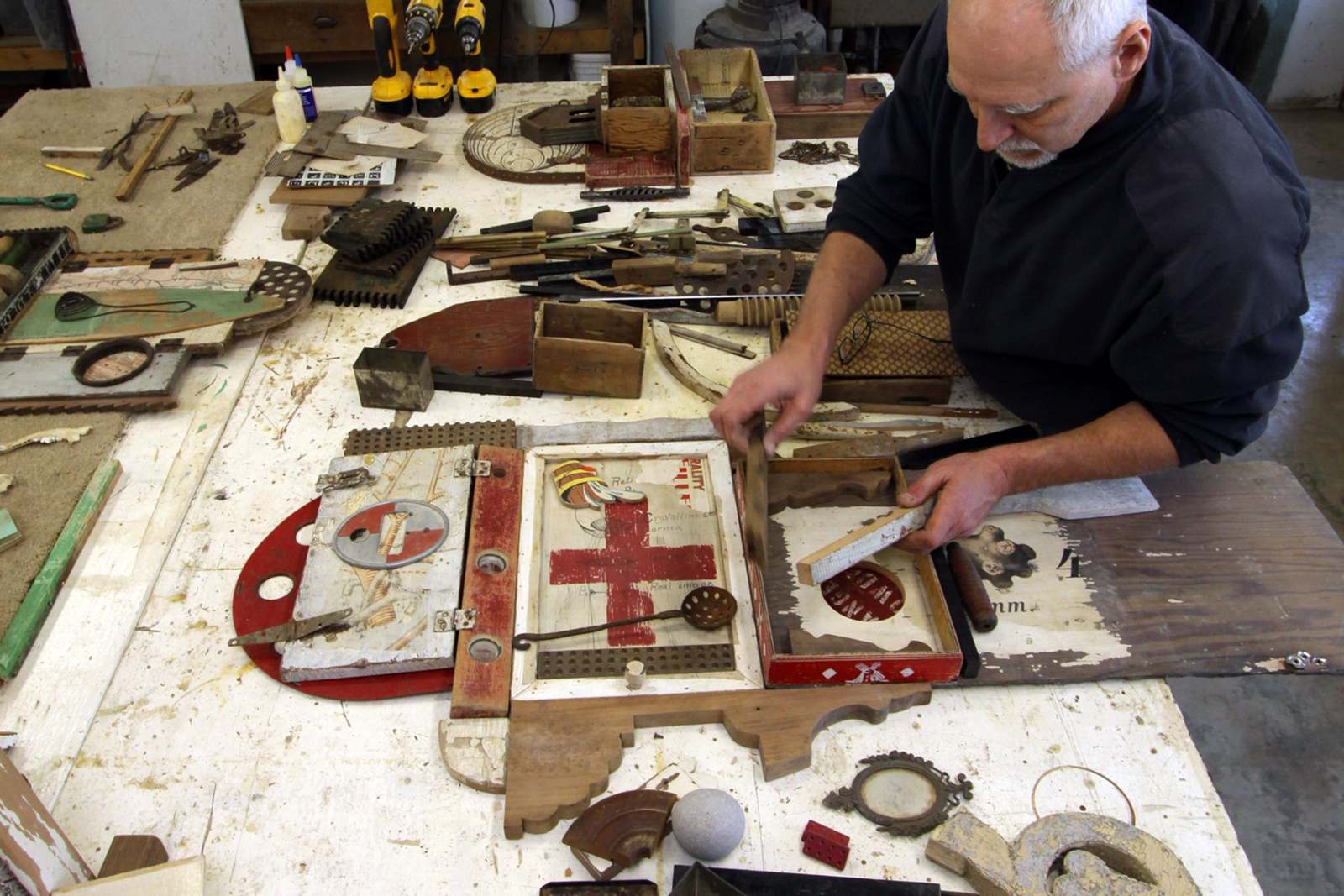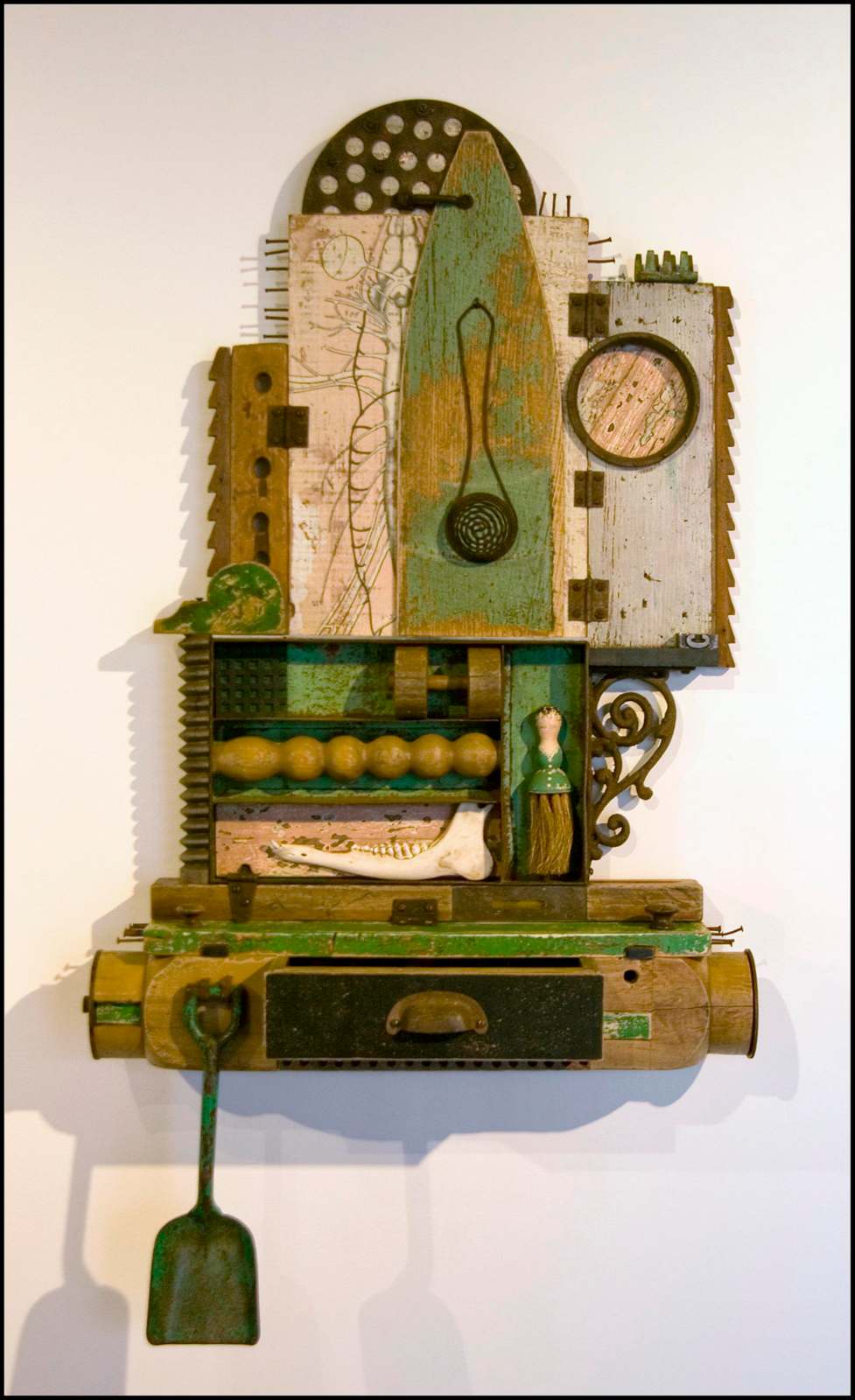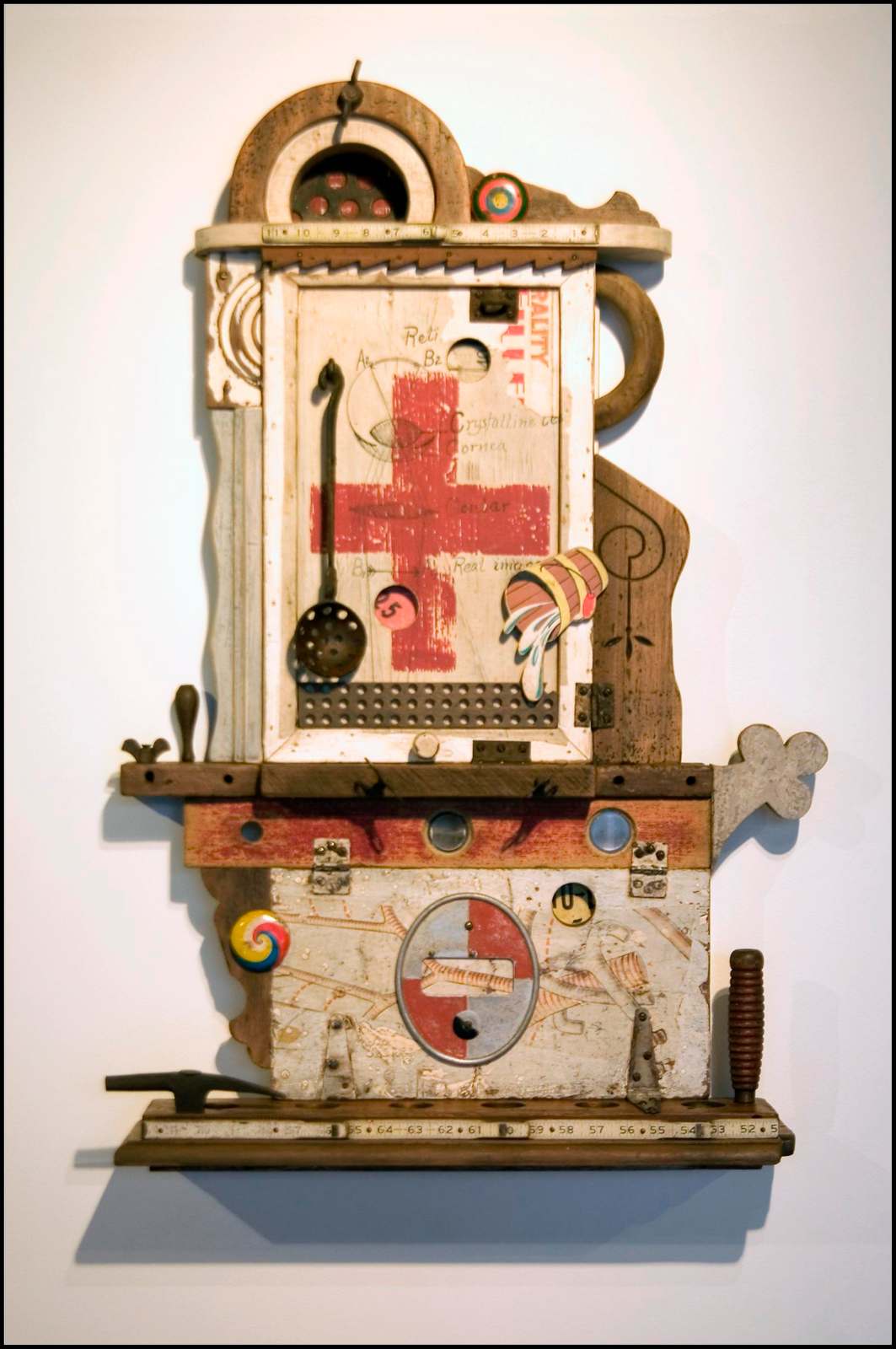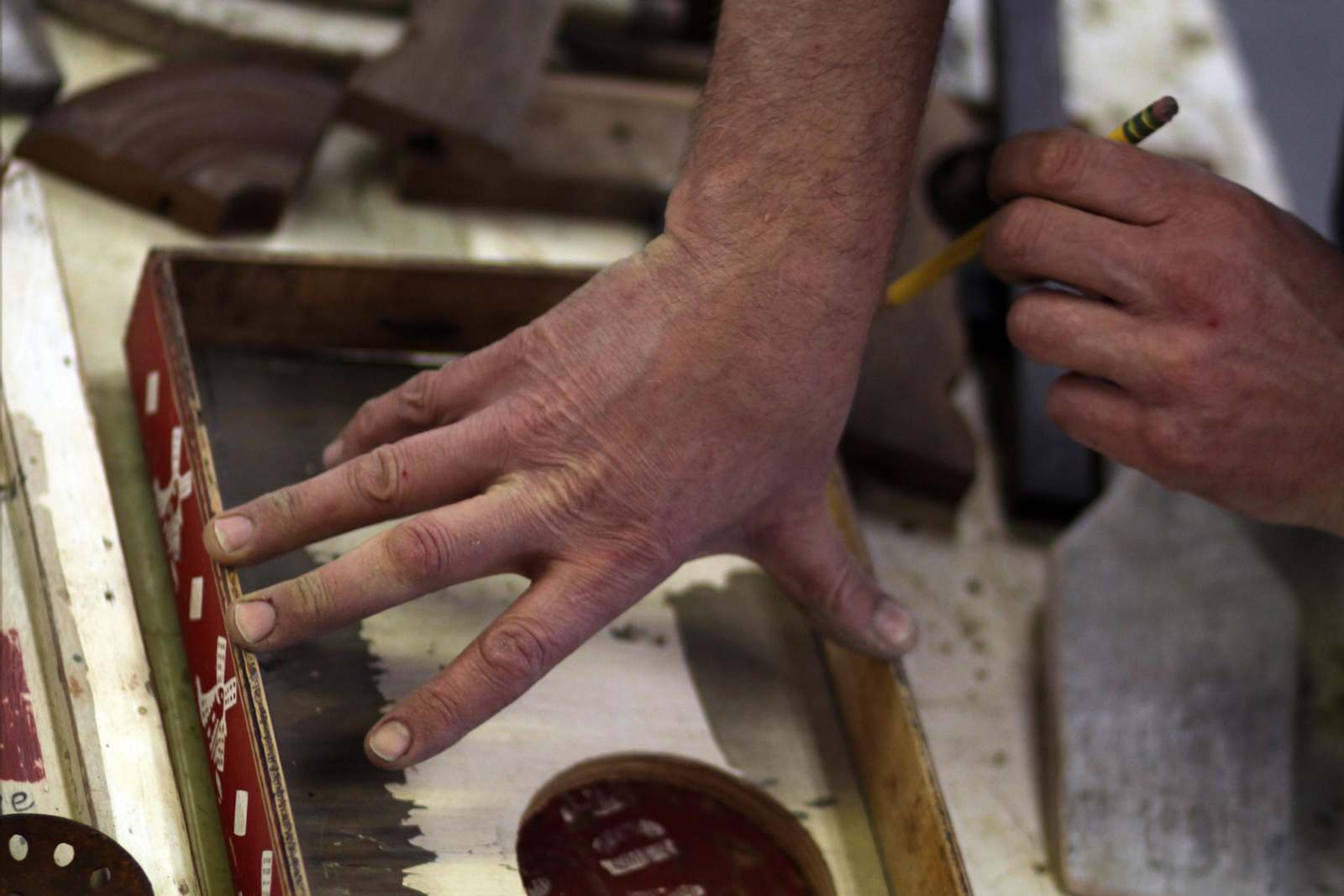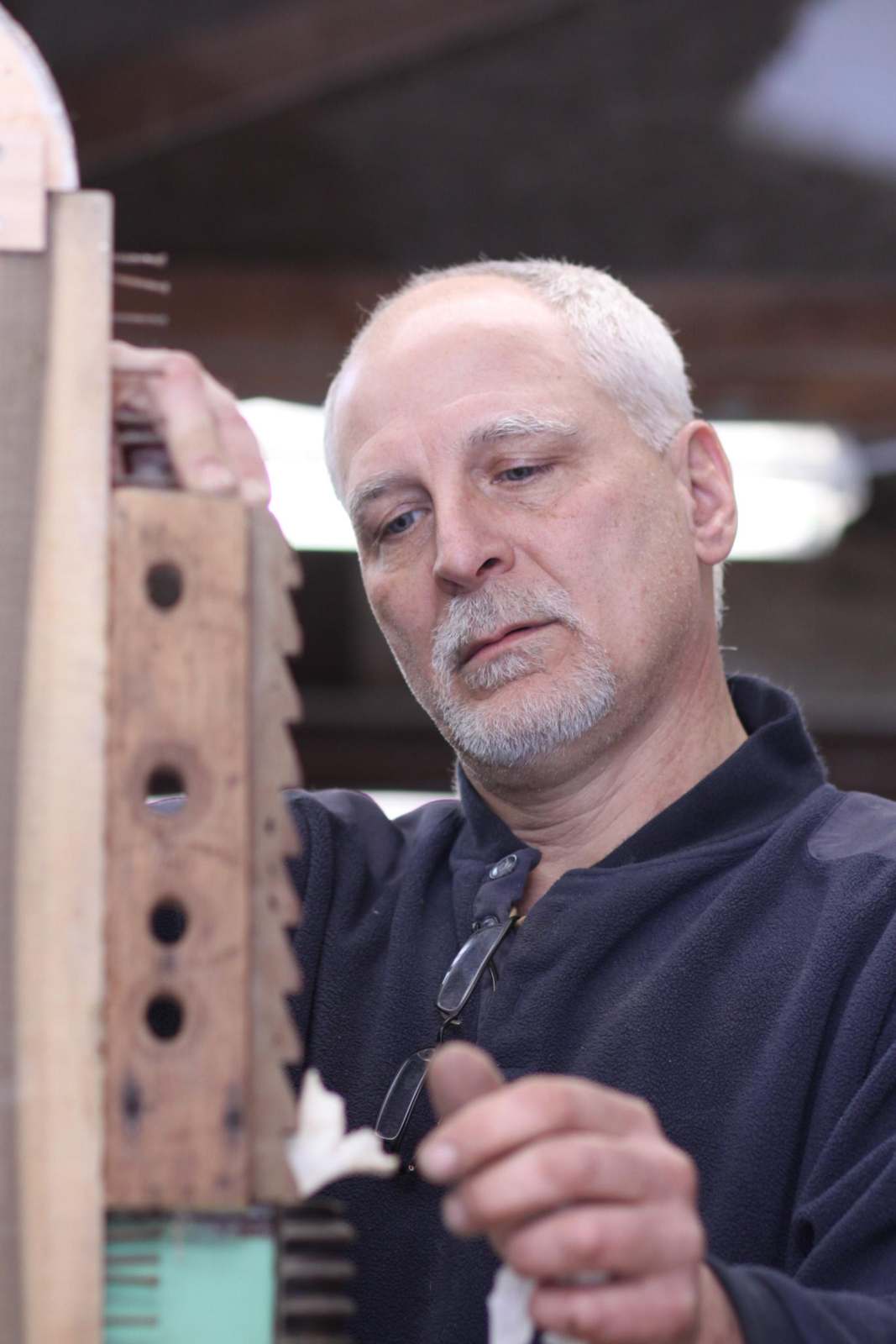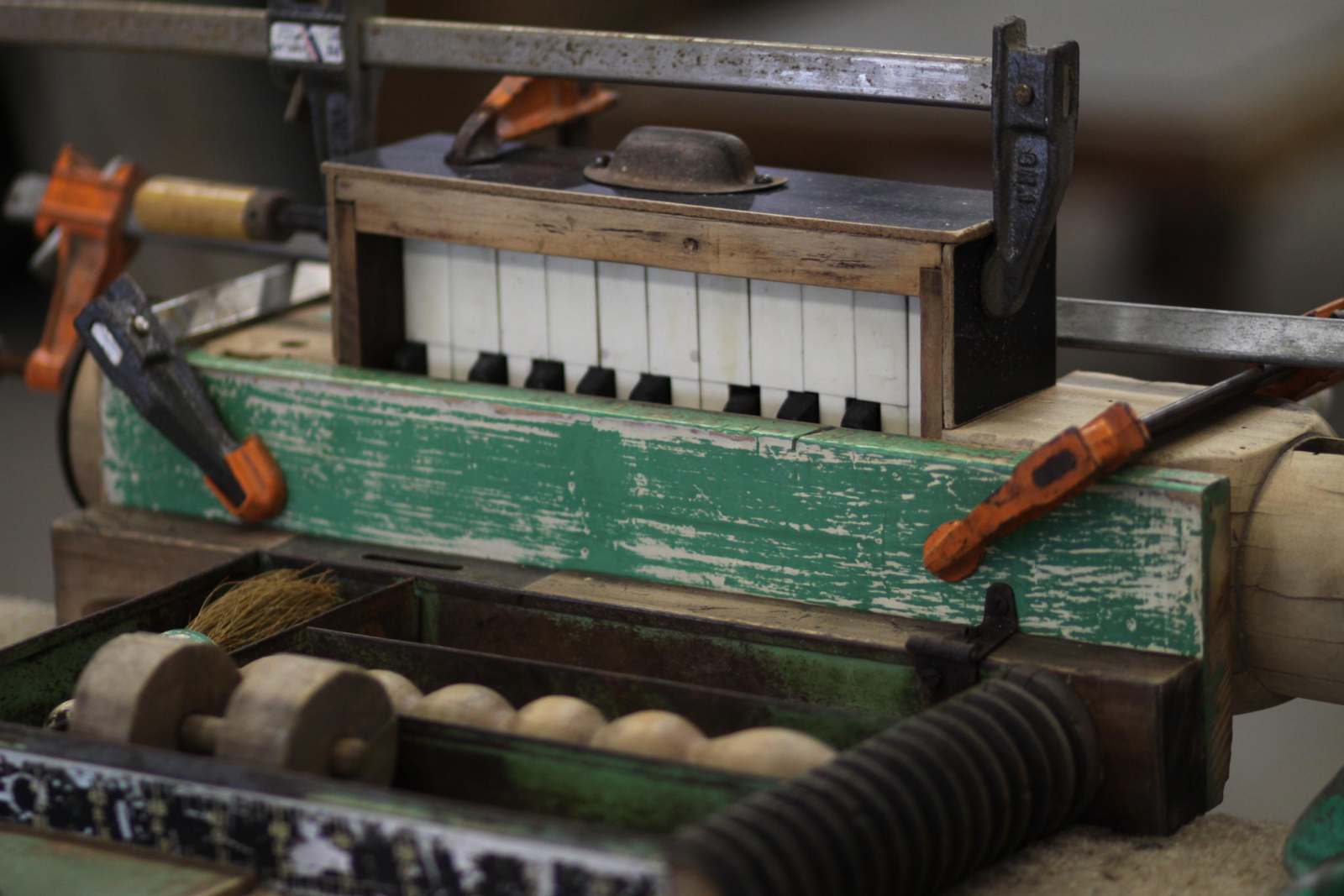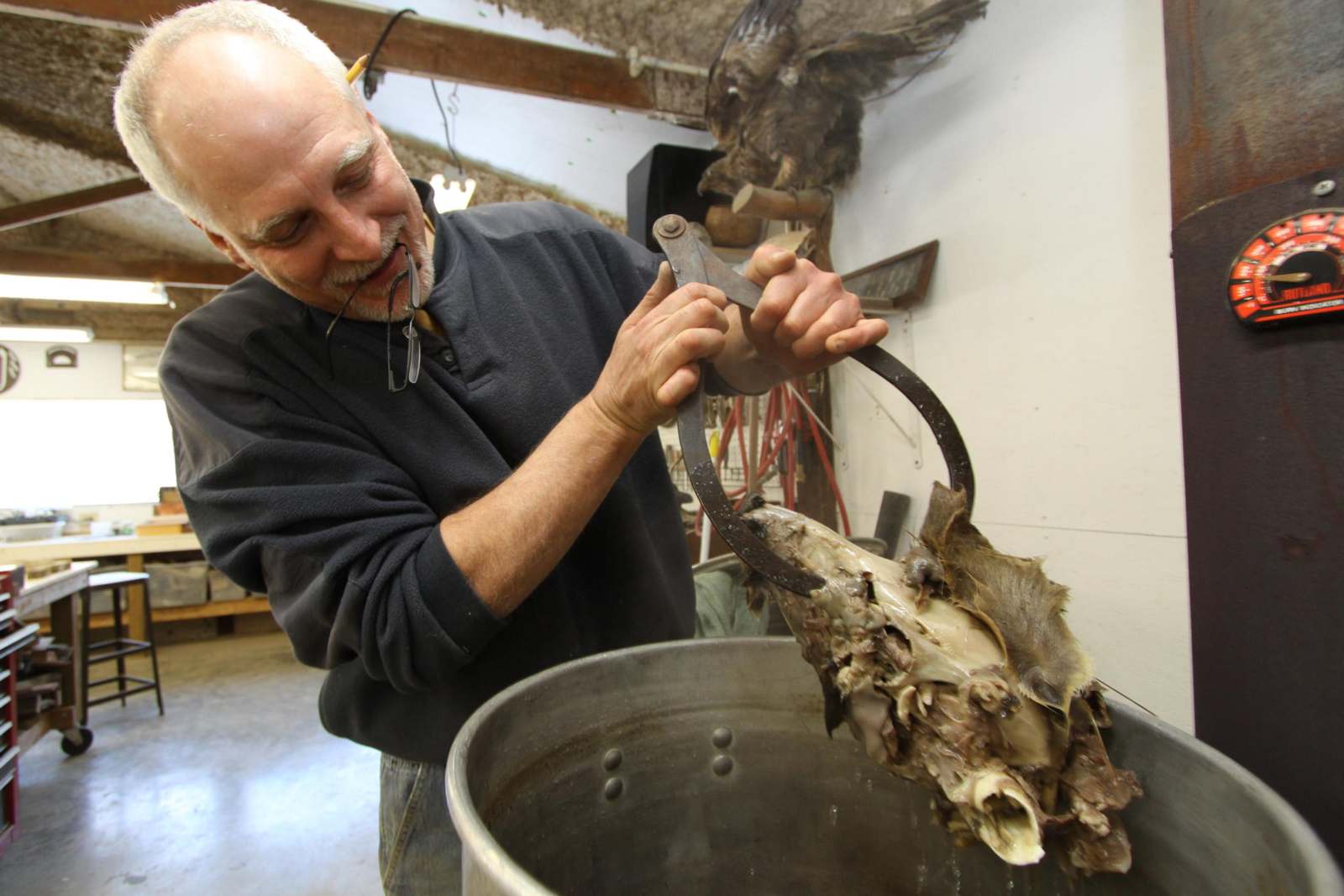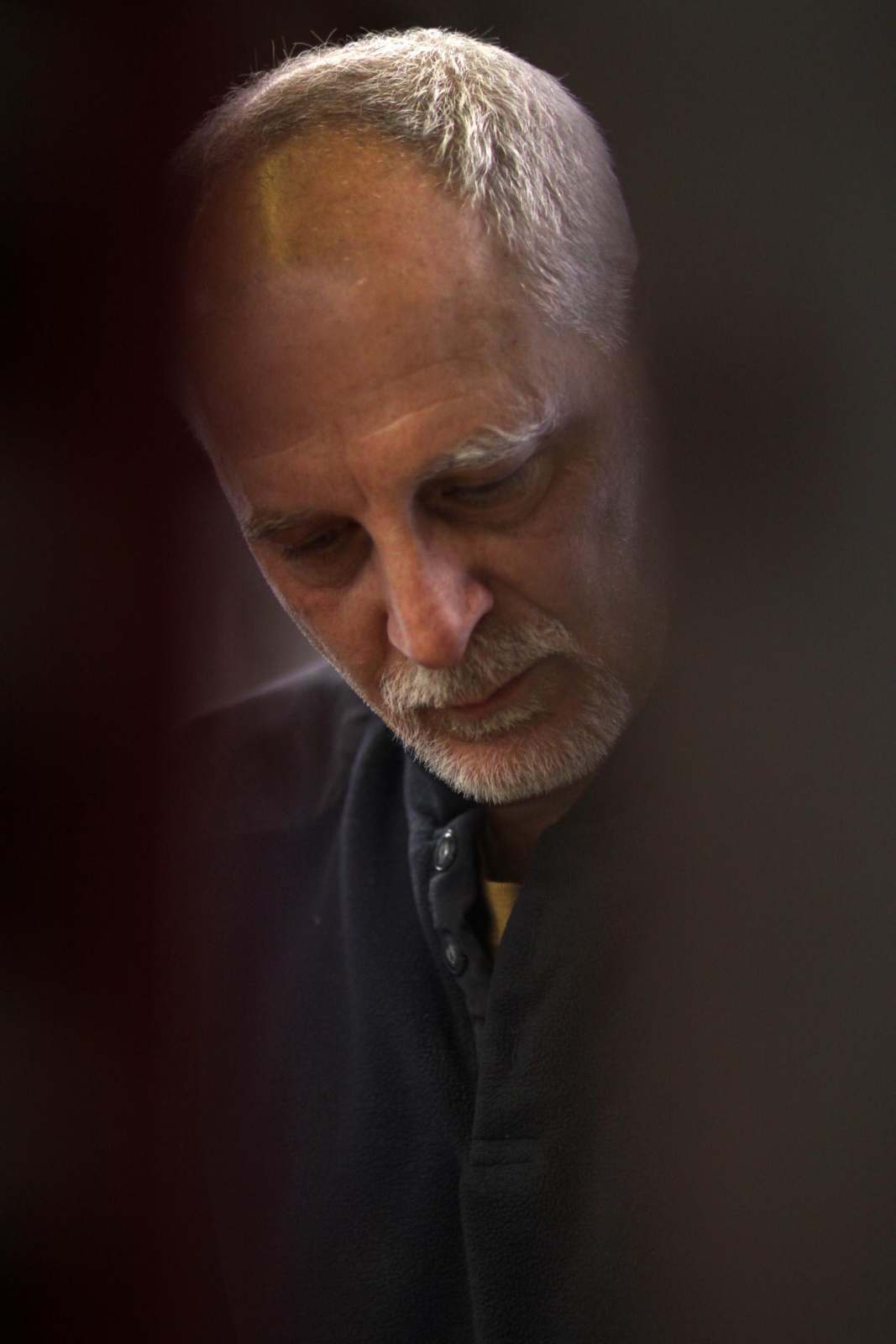A Biography of Objects: Calisch at Split Cedar Studios
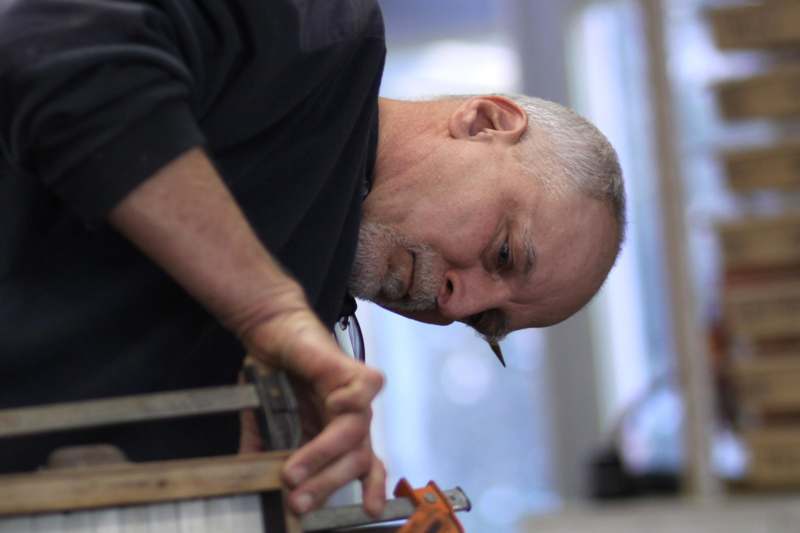
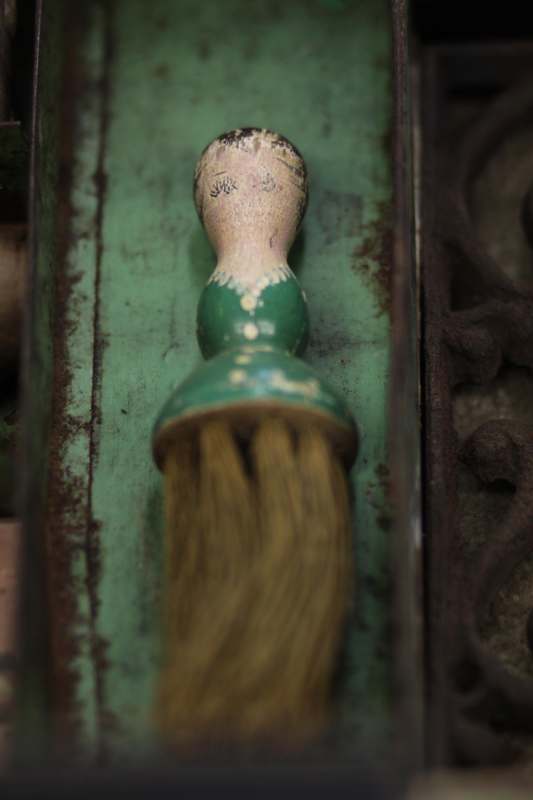
"Some of these pieces come about thematically, instantly, from the top, and everything is based on that. Others kind of grow visually, then themes kind of sneak in during and after the fact. And I’m okay with that.
"Sometimes you find a single piece and you know that you have to build a whole sculpure around it: This green girl, a shaving brush, I think—I sure kind of liked it. I started with her. She’s green and pink, and I started looking at the relationships between green and pink and black and white—if an object had those colors it made it into the pile for this piece.Then I started to refine it."
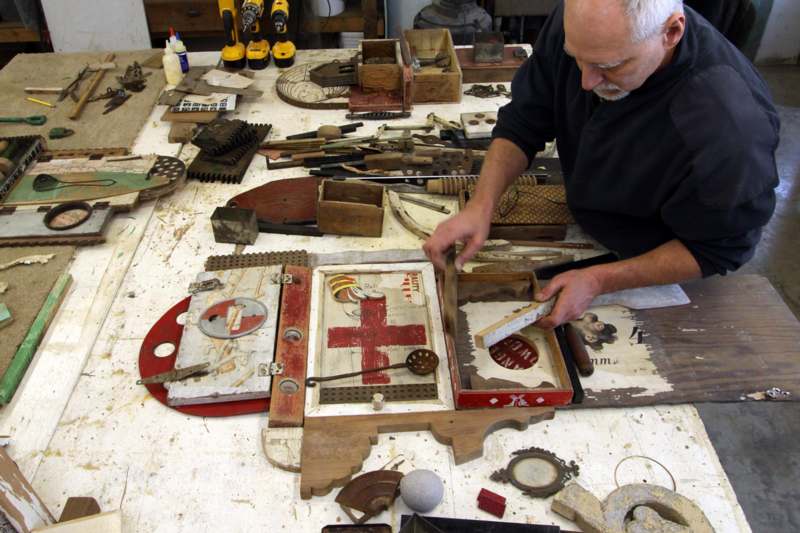
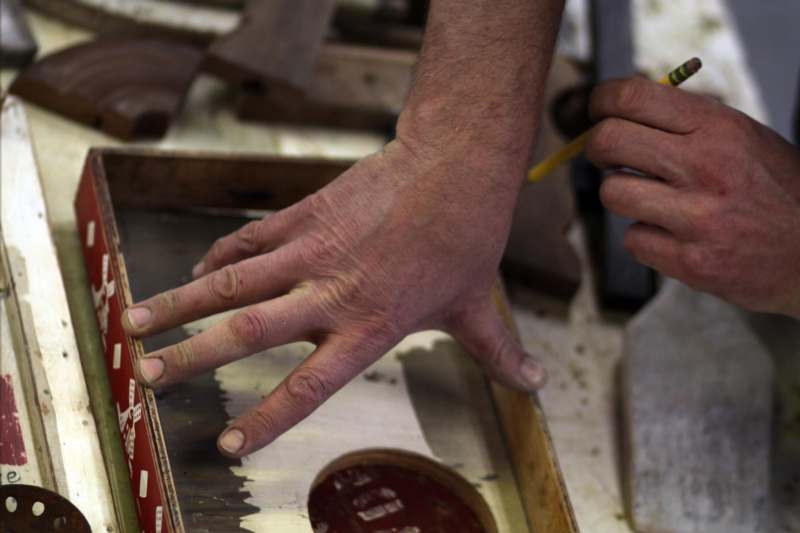
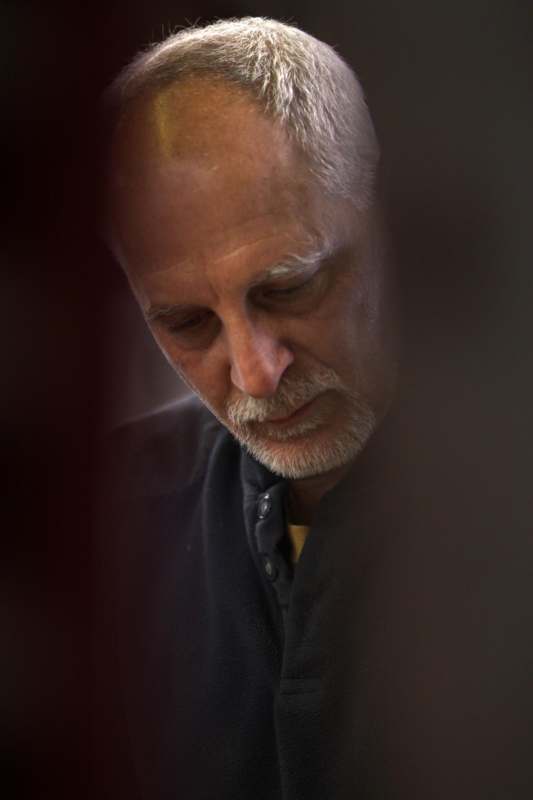
"The great thing about being an artist is that you get to make things."
Those words are from Joe Trumpey, one of Calisch's former students. But Calisch personifies them. And Trumpey witnessed that joy of "making" in Calisch's classes and when he lent Doug and Laura a hand as they built their home and the studio during Calisch's first sabbatical. Trumpey went on to build his own house (which the Calisches visited last summer), and his life as a professor at the University of Michigan mirrors his mentor's in many ways.
Another former student says you can't understand Doug Calisch unless you've seen the studio he built—the dozens if not hundreds of odd-ball objects hanging from the walls or scattered on shelves (a silver-plated fish on a board next to the chrome letters "Hollywood," the jawbone of a deer, plaster faces, a stuffed hawk) or piled up on the tables, where a cat occasionally perches. Half studio, half wood shop, with lots of windows, it's a place that practically urges you to create.
And a place where art is at home. Over the years, Calisch and his sons, Nolan and Sam, have come out here to make all sorts of things together. The sons are grown up now, but when they come home, they'll often spend time in here.
The week prior to my visit, Laura was out of state on vacation. Doug said he rarely went into the house except to sleep and eat a little. Free to do exactly as he pleased, he spent almost all of his time in the studio, making things.

